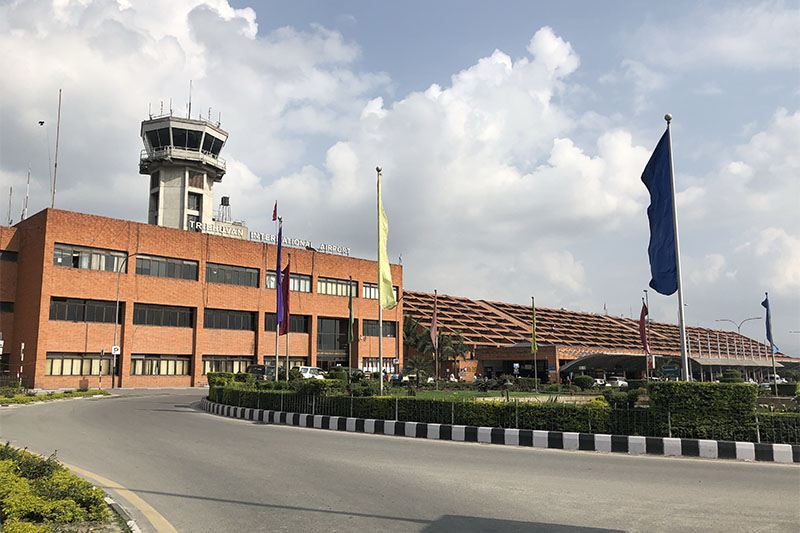Air traffic congestion to hit VNY 2020
TIA has been operating beyond its capacity since long and there are plans of more airline companies flying to Kathmandu
-Doleshwar Koirala, ground support director of NAC at TIA
Kathmandu, November 12
While the country is all set for the Visit Nepal Year 2020, the gateway of the country — Tribhuvan International Airport — is struggling to manage flight operations on a daily basis.
Lack of space and increasing number of flights, along with unmanaged flight operations, are creating air traffic congestion. Aircraft being put on hold have become common at TIA.
Among the numerous problems at TIA, an aircraft of Nepal Airlines Corporation that arrived from New Delhi at 7:30 pm yesterday was stranded on the taxiway for about an hour as there was no space in the parking bay.
However, NAC claims that such incidents are normal during the peak season. “TIA has always grappled with parking issues and since it is the tourist season we face this hassle,” said Sulekh Mishra, joint spokesperson for NAC.
Doleshwar Koirala, ground support director of NAC at TIA, said last night’s incident highlighted TIA’s parking problem. “TIA has been operating beyond its capacity since long and there are plans of more airline companies flying to Kathmandu, which will definitely compound the problem.”
According to Koirala, there are 11 parking bays at TIA for international flights. Among them, three are used for wide-body planes and the remaining for narrow-body aircraft. The two new remote parking bays are not utilised to offload passengers.
“Lack of schedule management also causes aircraft being put on hold during both take-off and landing,” he said.
It is common for both domestic and international flights arriving at TIA to be put on hold for more than an hour.
In another incident on Friday, an aircraft of Shree Airlines collided with a parked aircraft of Yeti Airlines at TIA due to parking congestion. “The domestic section has 17 parking bays but we have to adjust 30 planes daily in those bays,” said Yograj Kandel, spokesperson for Airlines Operators Association of Nepal.
Friday’s incident did not cause much damage but who knows what could have happened, he added. “As domestic companies are adding more planes, and that too 72-seaters, the parking problem is not going to be resolved anytime soon,” said Kandel.
A major problem that companies face when their aircraft are put on hold is the ‘fuel burn’. “Fuel burn rate is lower when the plane is still on the ground than when it is in the sky, but ultimately in both situations it affects the company financially,” said Koirala. “Such delays during take-off and landing also mean wasted time for passengers.”
Currently, around 1.1 million tourists travel to Nepal annually and the government has a target of bringing two million tourists in 2020. This means a two-fold increase in aircraft and passenger movement next year.
CN Pandey, president of Nepal Association of Tour and Travel Agents, said an airport was the first impression of a country for any tourist, hence airport operations should be smooth. “We have received numerous complaints from passengers of long-haul flights being put
on hold and since tourism also depends on word-of-mouth publicity, it will affect the sector,” he added.
Meanwhile, the government has committed to operating TIA for 24 hours to reduce air traffic congestion.






